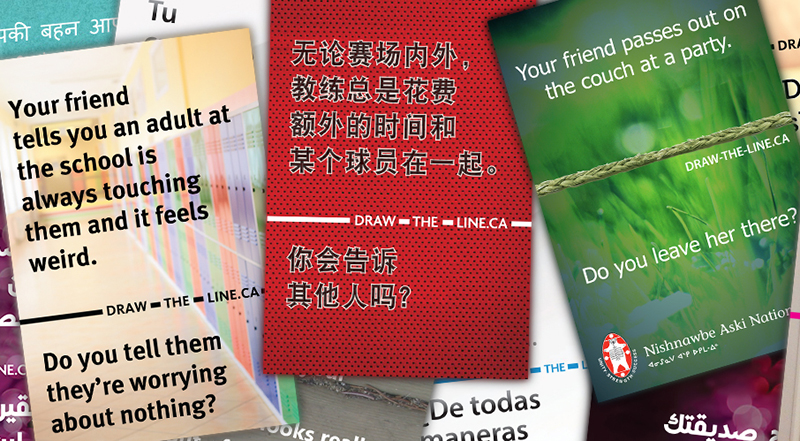Draw the Line User Guides are designed for educators using Draw the Line materials in the classroom, from elementary to post-secondary.
User guides
Ontario Coalition of Rape Crisis Centres User Guide
The Ontario Coalition of Rape Crisis Centres User Guide (2012) is intended for individuals and/or organizations who want to implement the Draw the Line campaign. The guide leads you through the campaign concepts, branding model and ways to bring the campaign to life. It includes a comprehensive list of definitions and statistics to help in un- derstanding sexual violence as well as the Draw the Line bystander intervention campaign. With recognition that men are also survivors of sexual violence, these materials are primarily directed at sexual violence against women.
Egale Canada User Guides
The Egale Canada user guide (2015) provides materials on Draw the Line – Against Transphobic Violence (DTL- ATV). DTL-ATV was designed in response to the heightened awareness regarding trans communities’ need for support, awareness, safety and allyship. This guide informs discussions on trans identities in the classroom, understanding intersectional identities, and provides curriculum connections. These materials encourage bystanders to recognize and intervene in transphobic violence as part of the broader Draw the Line campaign. DTL – ATV is particularly focused on starting conversation around sexual and transphobic violence impacting trans women.
White Ribbon User Guide
The White Ribbon User Guides (2017) for Ontario Educators of Grade 1-8 and of Grades -12, Drawing the Line on Sexual Violence was written by Ontario educators in collaboration with White Ribbon to support teachers in raising aware- ness among their students about topics relating to sexual violence prevention. This guide presents engaging lessons that draw on expectations from various subjects in the Ontario curriculum to address topics such as consent, healthy relation- ships, and the role of bystanders in sexual violence.
Get tips, tools and more on our social media channels.
Sign up to our Newsletter

